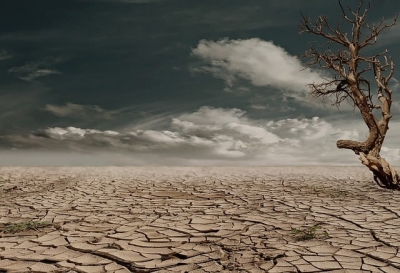
Soil degradation refers to the decline of soil quality due to its improper use, usually for agriculture, industry, and urban activity. Degraded soil can have lower amount of fertility and organic matter, and be high in salinity, acidity, and toxicity. Since soil is inevitable for all life forms on our planet, the continuous decline in soil quality can have disastrous results such as desertification, flooding, landslides, loss of wildlife, etc.
Various Causes of Soil Degradation
1. Physical Factors
There are several physical factors contributing to soil degradation distinguished by the manners in which they change the natural composition and structure of the soil. Rainfall, surface runoff, floods, wind erosion, tillage, and mass movements result in the loss of fertile top spoil thereby declining soil quality.
2. Biological Factors
Biological factors refer to the human and plant activities that tend to reduce the quality of the soil. Some bacteria and fungi overgrowth in an area can highly impact the microbial activity of the soil through biochemical reactions, which reduces crop yield and the suitability of soil productivity capacity.
Human activities such as poor farming practices may also deplete soil nutrients thus diminishing soil fertility. The biological factors affect mainly lessens the microbial activity of the soil.
3. Chemical Factors
The reduction of soil nutrients because of alkalinity or acidity or waterlogging are all categorized under the chemical components of soil degradation. In the broadest sense, it comprises alterations in the soil’s chemical property that determine nutrient availability.
4. Deforestation
Deforestation causes soil degradation on the account of exposing soil minerals by removing trees and crop cover, which support the availability of humus and litter layers on the surface of the soil.
5. Misuse or excess use of fertilizers
The excessive use and the misuse of pesticides and chemical fertilizers kill organisms that assist in binding the soil together. Most agricultural practices involving the use of fertilizers and pesticides often entail misuse or excessive application, thereby contributing to the killing of soil’s beneficial bacteria and other micro-organisms that help in soil formation.
6. Industrial and Mining activities
Soil is chiefly polluted by industrial and mining activities. As an example, mining destroys crop cover and releases a myriad of toxic chemicals such as mercury into the soil thereby poisoning it and rendering it unproductive for any other purpose.
7. Improper cultivation practices
There are certain agricultural practices that are environmentally unsustainable and at the same time, they are the single biggest contributor to the worldwide increase in soil quality decline. The tillage on agricultural lands is one of the main factors since it breaks up the soil into finer particles, which increase erosion rates.
8. Urbanization
Urbanization has major implications on the soil degradation process. Foremost of all, it denudates the soil’s vegetation cover, compacts soil during construction, and alters the drainage pattern.
9. Overgrazing
The rates of soil erosion and the loss of soil nutrients, as well as the topsoil, are highly contributed by overgrazing. Overgrazing destroys surface crop cover and breaks down soil particles, increasing the rates of soil erosion. As a result, soil quality and agricultural productivity are greatly affected.
Fatal Effects of Soil Degradation
1. Land degradation
Soil quality decline is one of the main causes of land degradation and is considered to be responsible for 84% of the ever-diminishing acreage. Year after year, huge acres of land lost due to soil erosion, contamination, and pollution.
2. Drought and aridity
Drought and aridity are problems highly influenced and amplified by soil degradation. As much as it’s a concern associated with natural environments in arid and semi-arid areas, the UN recognizes the fact that drought and aridity are anthropogenic induced factors especially as an outcome of soil degradation.
3. Loss of arable land
Because soil degradation contributes to land degradation, it also means that it creates a significant loss of arable land. As stated earlier, about 40% of the world’s agricultural land is lost on the account of soil quality depreciation caused by agrochemicals and soil erosion.
4. Increased flooding
The land is commonly altered from its natural landscape when it rids its physical composition from soil degradation. For this reason, the transformed land is unable to soak up water, making flooding more frequent.
5. Pollution and clogging of waterways
Most of the soil eroded from the land together with the chemical fertilizers and pesticides utilized in agricultural fields are discharged into waterways and streams. With time, the sedimentation process can clog waterways, resulting in water scarcity.
SOLUTIONS : There are many solutions to soil degradation, which include: practicing responsible farming techniques, active forestation, as well as preventing soil erosion and pollution. In addition, soil degradation can be avoided through responsible developments in urban and residential environments.




